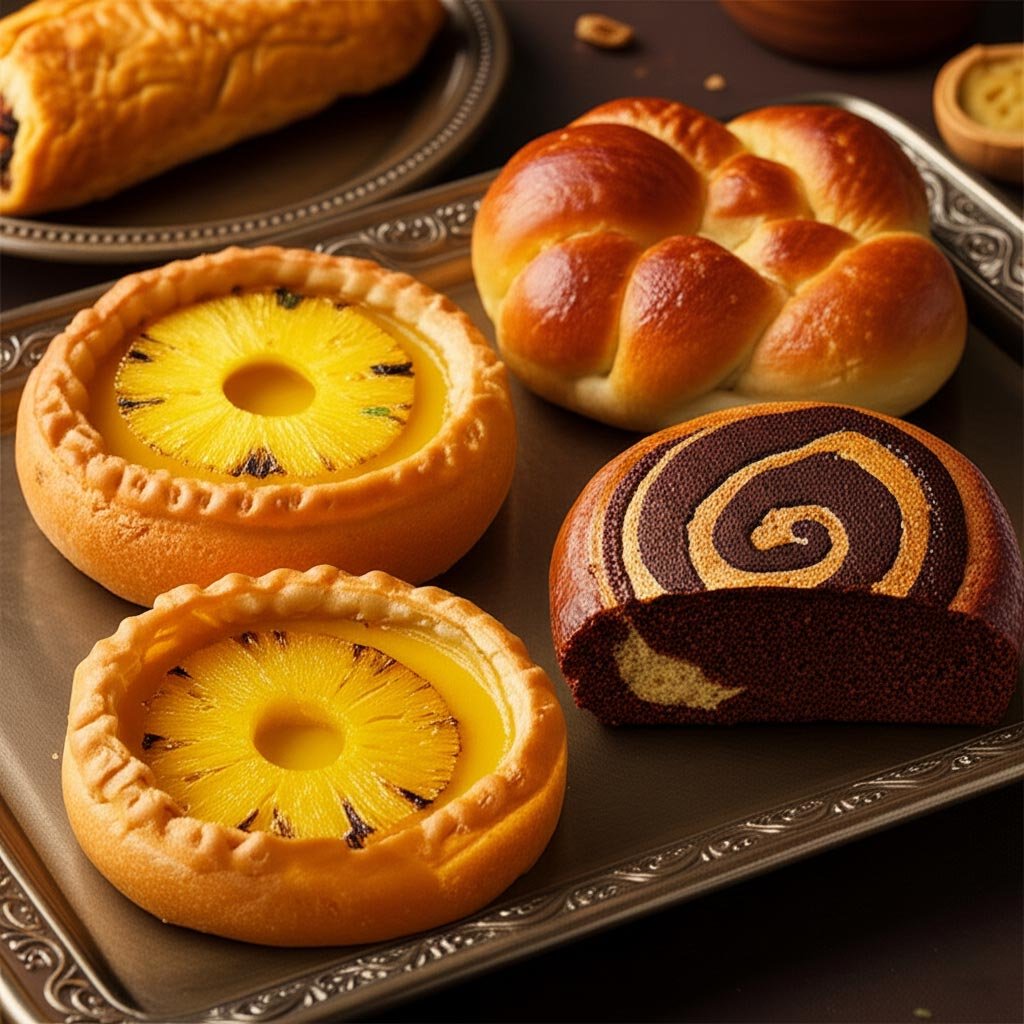4 Must-Try Tandoor Baked Desserts That Will Blow Your Mind

A tandoor is an oven made from clay or metal, mostly used for cooking and baking in the northern India, southern Asia, Central Asia, Western Asia, and the South Caucasus. You may have cooked meats and fish and may other popular dishes in a Tandoor oven, but do you know you can cook these 5 amazing dishes in a tandoor? Let us walk you through the 5 amazing desserts to cook in a tandoor oven.
1. Tandoori Pineapple
The first recipe we will talk about is Tandoori Pineapple. When you cook and have a bite, you will get a special flavour and aroma that will amaze you.
- The first step is to cut the pineapple into thick pieces.
- To make a glaze, mix,
- Honey
- A Pinch of Chilli Powder
- Star Anise
- Fennel Seeds.
- After that, brush it over the thick slices of pineapple.
- Put the pineapple on the skewer and place it inside the tandoor oven.
A tandoor oven will help cook the pineapple faster and also give it a smoky flavor. The mixture of honey, chilly powder, and other ingredients will make it both sweet and spicy. To put a cherry on top, add some ice cream to the top of the pineapple, which will add a creamy texture. This is a very easy dessert recipe you can cook for a family dinner or a party.
2. Marble Cake
Do you know you can cook a Marble Cake in a Tandoor Oven? Let’s see how we can make it.
- Make a smooth batter by adding
- Eggs
- Sugar
- Butter
- Flour
- Baking Powder
- Milk
- Now, divide the batter into two bowls.
- Add cocoa powder to one bowl to make the chocolate, and vanilla to another.
- Add both batters into a greased pan and swirl with a stick to create the marble effect.
- Preheat the tandoor by placing the cake pan in it, and bake for 30 minutes
You can present the cake at a birthday party or eat it with coffee in the evening.
3. Tandoori Glory Sweet Buns
The following recipe is for a sweet bun. The sweet buns are soft, fluffy, and flavored when cooked in a tandoori oven.
- At first, to prepare the dough, add
- Almond milk
- Sugar
- Olive Oil
- Yeast
- After that, rest the dough, until it doubles in size.
- Now, roll out the dough, and you can add filling. To make the filling, add,
- Brown Sugar
- Coconut Oil
- Ginger
- Tandoori Spices
- Roll up the dough and cut the filling into pieces when you add the filling.
- Now, place it in a greased pan.
- Again, you have to give it a rest, let the bun rise in size a bit
- Put the sweet buns in the tandoor oven until golden brown and soft.
- You can brush some honey yogurt on it to add some extra sweetness.
You can have it for breakfast with tea or when you crave something sweet.
4. Traditional Sweet Bread
We discussed the recipe for sweet buns, but now we are going to talk about an Azerbaijani recipe called Sweet Bread.
- Add these ingredients,
- Flour
- Sugar
- Eggs
- Butter
- Place it in a hot tandoor after shaping it.
- Now, let the bread get a crispy crust and be soft inside.
- You can add sesame seeds or some nuts for some extra crunch.
You can serve it during a celebration or at a family dinner.
Common Queries – FAQ’S
Can I use a tandoor Indoors?
Yes, certain tandoor models are designed for residential use, including compact, home-friendly versions. However, using a tandoor indoors requires proper ventilation and adherence to safety precautions to manage high heat and potential smoke. Always consult the manufacturer’s guidelines to ensure safe indoor use. For best results, they are often used in well-ventilated spaces or outdoors.
Are Tandoor-Cooked Foods Healthy?
Yes, tandoor-cooked foods are often considered healthy because they typically require little to no oil. The high cooking temperatures allow the food to cook quickly, preserving nutrients while reducing the need for additional fats. Additionally, the vertical cooking method allows excess fats to drip away, resulting in leaner dishes.
What Types of Fuel Can Be Used in a Tandoor?
Tandoors can be heated using charcoal, wood, natural gas or propane. Charcoal and wood provide an authentic smoky flavor, while natural gas or propane is more convenient and easier to control. The choice of fuel often depends on the specific cooking requirements and local regulations, especially in commercial settings.
How Does a Tandoor Oven Differ from a Conventional Oven?
Unlike conventional ovens, which use electric or gas heat, a tandoor is made from clay and uses charcoal, wood, or gas to heat the walls. The cylindrical shape and porous clay walls create an environment where heat circulates evenly, cooking food quickly while adding a smoky flavor. Conventional ovens, in contrast, lack the intense heat and unique cooking technique of a tandoor.
How Much Maintenance Does a Gas Tandoor Require?
Gas Tandoor needs regular maintenance, though less than Charcoal Tandoor models. Here’s a breakdown:
- Daily Maintenance: Wipe down the inner chamber and clean the burner.
- Weekly Maintenance: Check the burner and gas line for any blockages or leaks.
- Monthly Maintenance: Deep clean the gas pipes, burners, and inner chamber.
- Quarterly Maintenance: Have a professional inspect the gas connections and burners.
- Annual Maintenance: Perform a full inspection and reapply clay lining if needed.
Avoid exposing the tandoor to excessive water, and gradually increase heat to prevent cracks.
How Can I Make a Payment for My Tandoor Order?
You can pay for your tandoor order through our website by placing an online order using the available payment options. If you prefer to place an order over the phone, we accept payment via Zelle for a quick and secure transaction.
Which Tandoor Oven Size Should I Choose?
- For Home Use: Consider the number of family members or guests you typically serve. A mini tandoor is ideal for smaller gatherings.( Suggested Product: R26 )
- For Restaurants: Measure the entrance to ensure the oven fits through the door. Select a size based on available space and cooking needs. (Suggested Product: CH02)
- For Naan Bread: Opt for an oven with a smaller mouth opening, resulting in a more egg-shaped clay pot, perfect for naan preparation. For larger meat portions, choose a bigger oven to maintain heat longer. (Suggested Product: CH04)
- For Catering: A Clay Tandoor Oven is suitable for catering due to its lightweight and easy transport features. (Suggested Product: CS01)
- For Banquet Halls: A larger oven with a spacious clay pot is ideal for preparing multiple dishes quickly during big events. (Suggested Product: CH06)
- For Open Kitchens or Outdoor Patios: Choose a model with a decorative finish, such as a copper tandoor, to enhance the kitchen’s appearance with a touch of elegance. (Visit Our Copper Tandoor).
What Should You Consider When Installing a Restaurant Clay Oven?
- When installing a tandoor in your restaurant kitchen, consider the following:
- Space and Placement: Ensure there is enough clearance around the tandoor for ventilation and safety, with fireproof or heat-resistant flooring.
- Ventilation and Exhaust: Proper ventilation is essential to handle heat and smoke, especially with charcoal tandoors.
- Safety Measures: Use heat-resistant barriers if the tandoor is near other equipment, and keep fire safety equipment like extinguishers handy.
- Fuel Supply: Decide between charcoal, which offers traditional flavors, and gas, which is easier to manage.
By keeping these points in mind, you can ensure a safe and efficient tandoor setup. If you're looking for a Restaurant Clay Oven for Sale, make sure to choose a model that fits your kitchen's requirements and meets all necessary safety standards.
- Menu Considerations: Larger tandoors or multiple units may be needed if you have a diverse menu or high demand during peak hours.
- Maintenance and Cleaning: Clean the tandoor daily and monitor for any wear or damage to the clay or gas parts.
- Compliance with Regulations: Ensure your installation meets local safety standards and health codes.
- Staff Training: Train staff in safe tandoor operation and fire safety protocols.

